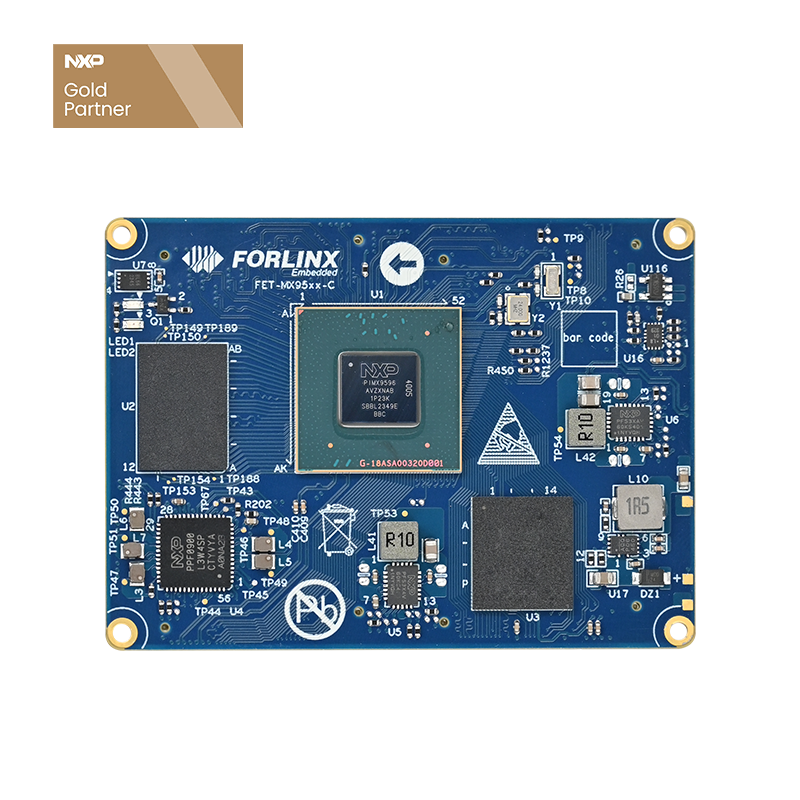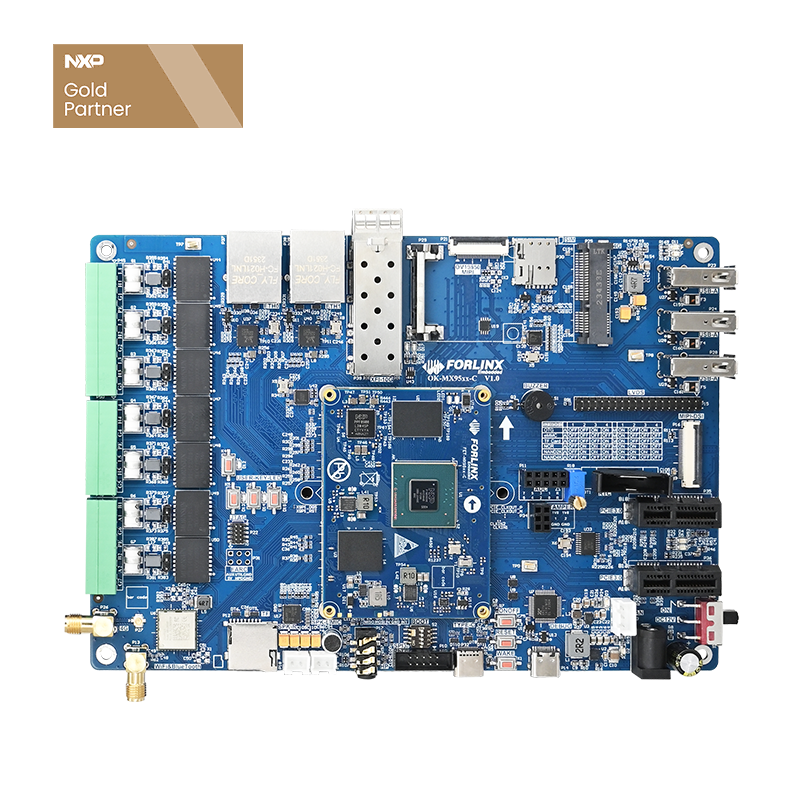
Forlinx Embedded's FET-MX9596-C SoM: Achieving Performance, Real-time and Security Balance in Edge Computing
In the current era of the deep integration of Industry 4.0 and AIoT, traditional single-core or even multi-core processors struggle to meet the complex requirements of high performance, real-time and security in the field of edge computing. To address this pain point, major chip companies have successively launched multi-core heterogeneous processors with both A-cores and M-cores. The NXP i.MX95xx series processor equipped on the newly released FET-MX9596-C SoM by Forlinx Embedded is a flagship multi-core heterogeneous chip. It integrates six Cortex-A55 cores, one Cortex-M7 core, and one Cortex-M33 core.
The advantages of this multi-core heterogeneous architecture are obvious. It enables hierarchical task processing via hardware isolation: the A55 core cluster handles Linux system-level computing, the M7 core focuses on real-time tasks like motion control, and the M33 core independently manages security encryption. In short, it combines “high performance, high real-time and high security”.
Analysis of Multi-core Heterogeneous Architecture
Achieving Hierarchical Task Processing through Hardware Isolation
Traditional embedded processors are often limited by the resource competition of homogeneous cores when facing complex application scenarios. The core advancement of the Forlinx Embedded FET-MX9596-C is its three-core heterogeneous architecture for physical quarantine, with each core fulfilling its designated role.
- Cortex-A55 Cluster: 6 high-performance cores @ 1.8GHz, responsible for running the Linux system, AI inference and processing complex algorithms;
- Cortex-M7 Core: An 800MHz real-time core dedicated to deterministic tasks such as motion control and sensor data collection;
- Cortex-M33 Core: A 333MHz security core that independently runs the encryption engine and security monitoring program.
This design is essentially a hardware-level functional decoupling. Through NXP's Energy Flex power management architecture, the three domains can be started and stopped independently. The real-time domain continuously monitors sensors, the security domain maintains the encryption state, and the application domain is only awakened when needed, reducing the system-level power consumption by at least 30%.
Breakthroughs in High-Performance Edge AI and Multimedia Processing
The high-performance of the FET-MX9596-C SoM comes from the A55 core cluster. Six Cortex-A55 cores share a 2MB L2 cache. Coupled with 8GB LPDDR4x memory, it can provide a bandwidth of up to 51.2GB/s, paving the way for edge AI computing.
Moreover, the inference speed of the integrated 2TOPS NPU in the processor is significantly improved, reaching 800MHz in normal mode and up to 1GHz in overclocking mode. The integrated image signal processor (ISP) and video processing unit (VPU) work together to provide excellent edge machine vision capabilities. Users can run advanced AI models on the NPU to achieve scene segmentation, real-time video enhancement and denoising, ensuring high-quality video images.
In addition, the new-generation ARM Mali-G310 GPU supports OpenGL ES3.2, Vulkan1.2 and OpenCL3.0, providing users with rich graphic experience and computing acceleration capabilities. The display controller can achieve two independent display output streams.
High Real-time
Hard Real-time Core Ensures Critical Tasks
High real-time is crucial in industrial scenarios. A timing deviation of more than 1ms in motion control may lead to product scrapping. In a vehicle system, a 1ms delay in brake signal processing may cause an accident. The Cortex-M7 core of the i.MX95xx series processor is designed for such scenarios. It is physically isolated from the A55 cluster. Even if the Linux system crashes, it can still ensure the stable operation of key communication interfaces, such as continuous communication on the CAN-FD bus, accurate output of PWM signals and uninterrupted ADC data collection.
On Forlinx Embedded's OK-MX9596-C development board, engineers can directly program the M7 core through an independent debugging interface without relying on the A55 cluster, greatly simplifying the development process of real-time tasks.
High Security
Advanced Security, Simplified Operation
Security is the foundation of edge applications. The i.MX95xx series processor integrates an independent Cortex-M33 security core, which is physically isolated from the high-performance Cortex-A55 application core, constructing a chip-level security protection system. It integrates a secure lock area to ensure that security functions (such as encryption and key management) are not affected by the high load of the application core, achieving low-latency and highly reliable security operations.
In addition, the i.MX95xx series has security features that meet the ISO26262 ASIL-B and IEC61508 SIL-2 functional safety standards, and can support the functional safety of basic automotive safety measures and industrial control systems.
Summary
The NXP i.MX95xx series processor achieves hardware-level functional decoupling and resource isolation through the A55 + M7 + M33 multi-core heterogeneous design. It not only meets the high-performance computing requirements of Linux system-level applications, but also constructs a hard real-time response and chip-level security protection through independent real-time and security cores, providing a complete solution with AI computing power, real-time control and security encryption for the edge computing field.
The FET-MX9596-C SoM with this chip is ideal for fields like edge computing, intelligent manufacturing, smart healthcare, and intelligent cockpits. Updated user materials and a comprehensive technical support system enable faster launch of relevant applications.



